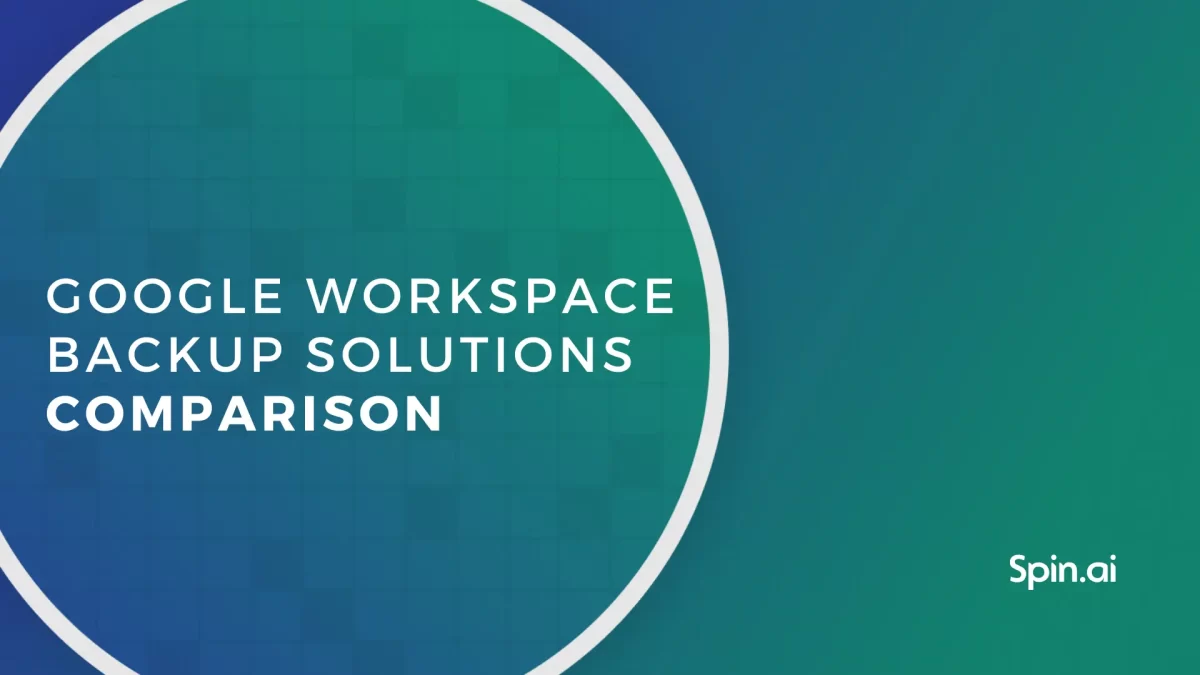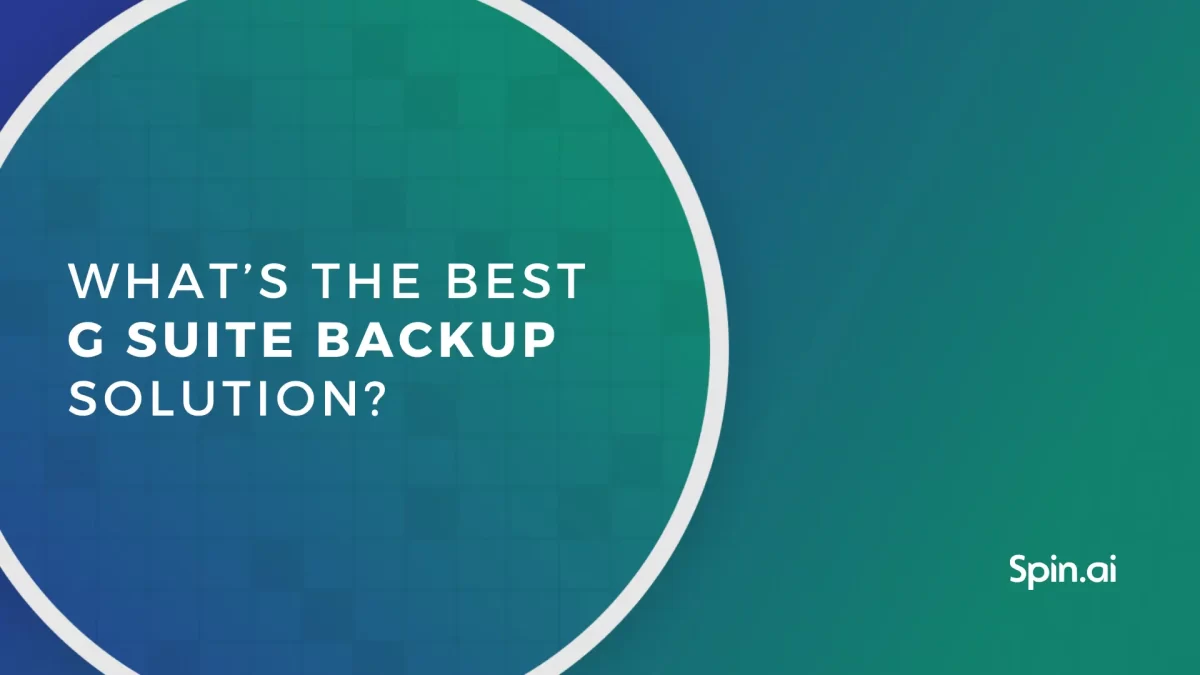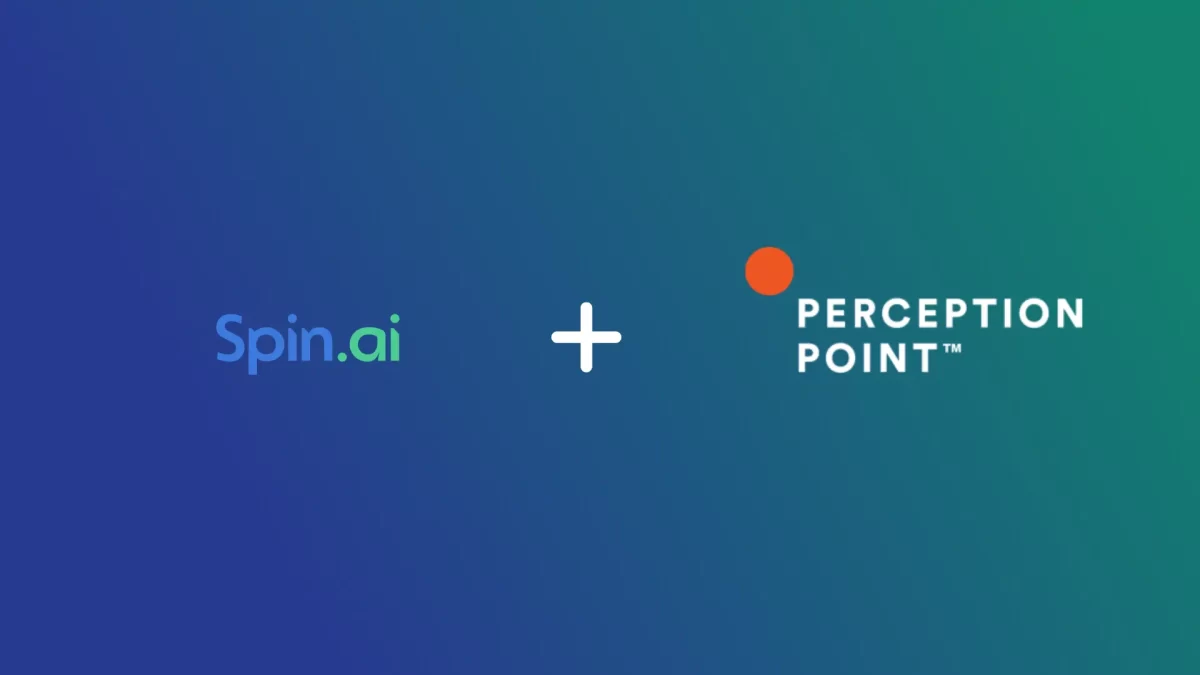Top 7 SaaS Security Gaps for SMBs

The use and prevalence of Software-as-a-Service in today’s modern IT infrastructure is undergoing strong adoption. Organizations today are housing business-critical services such as Email and Data storage to popular Software-as-a-Service offerings from the likes of Microsoft’s Office 365 and Google’s G Suite. These powerful SaaS offerings allow businesses to have access to premiere services and offerings that would otherwise be complex, difficult, or unable to be implemented on-premises.
Aside from the service offerings themselves, SaaS services from Microsoft and Google run inside of their world-class datacenters that provide high-availability mechanisms and redundancy that are not attainable by businesses running resources inside of private enterprise datacenters. Security of public cloud offerings has been one of the primary concerns since the inception of cloud computing. Cloud has certainly matured from the early days; however, security gaps are still a concern for SaaS. Especially for SMBs who may have very small IT staff in general, security in the cloud can be a difficult concern to address. A huge part of the battle is knowing where the security gaps exist. Let’s take a look at the top 8 security gaps in SaaS environments for SMBs and see how they can effectively address these.
Why SaaS Security Must Be a Priority
Public cloud SaaS has exploded into a multitude of services and offerings from the major public cloud vendors, so much so, it is hard to keep up with the services in whole. There are services and offerings that allow businesses to perform a wide range of tasks effectively and efficiently. Generally speaking, two of the most common business-critical applications and services that make their way to the public cloud first are e-mail and file storage. E-mail is still the fundamental means of communication for most businesses today and provides the basis for sending and receiving messages, communicating with customers and other businesses, as well as keeping track of contacts and calendaring. File storage is also a fundamental necessity for most businesses.
Depending on the industry and the use cases required, file storage can include various file types from documents, media, spreadsheets, PDFs, vendor specific files, network shares, etc. E-mail and file storage are basic necessities when it comes to businesses services. Maintaining these systems on-premises can be expensive, time consuming, require a great deal of support, and can encounter scalability issues depending on business growth. Due to the cost-effective nature and the wide range of features as well as the infinite scalability of the public cloud to fit business needs, these services are great candidates for cloud migration.
When it comes to cloud migration involving either Microsoft Office 365 or Google G Suite, migrating these services are usually the first step in making use of even more services provided by Microsoft and Google. When you take a step back and look at the nature of e-mail and file storage, they contain business-critical data. They can potentially contain information that is sensitive. Securing such resources should be a top priority for organizations utilizing public cloud for these types of service-oriented infrastructure.
Top 8 Security Gaps in SaaS Environments for SMBs
An extremely important part of security is knowing where potential security gaps exist so they can be fortified. When thinking about Software-as-a-Service offerings from Microsoft and Google, what are security gaps that can exist when utilizing SaaS services for business-critical processes and data storage? Let’s take a look at the following security gaps and why they are extremely important aspects of the overall security posture for businesses who have migrated data and services to SaaS offerings in the cloud.
- Not backing up SaaS data
- Failing to enforce corporate policies in the cloud
- Allowing data leakage
- Failing to restrict risky third-party apps
- Insider Threats
- Not protecting against ransomware attacks
- No proactive monitoring
Let’s take a look at each of these security gaps and see why they are so important for businesses to address.
Not Backing up SaaS Data
Backups are part of cloud security? In short, yes! Restoring data for disaster recovery purposes can remediate data loss as a result of security and other events. Thinking about the potential for data loss when thinking about such security risks as ransomware helps to underscore the importance of backing up data contained in SaaS offerings. A huge problem with SaaS offerings that are utilized by SMBs today such as Office 365 and Google G Suite is there are no native tools built into the solutions that allow effective data protection and recovery of data.
Microsoft only recently added the ability to recover previous versions of files stored in OneDrive for a period up to 30 days. While this is a start in the right direction, it still leaves much to be desired in terms of complete coverage for Office 365 apps as well as further OneDrive protection. True data protection is characterized by much more powerful capabilities for creating backups and performing restores. The native ability provided for OneDrive for Business is the only app covered by this “pseudo backup” mechanism. Other Office 365 apps such as Email, Contacts, Sharepoint, etc, are not protected by this 30-day functionality
Any robust security plan must include backups as part of the overall design. No security is 100% accurate and impenetrable. At some point, data will need to be recovered due to a security event. Organizations must account for this possibility and eventuality when deciding to utilize SaaS offerings located in the public cloud. As mentioned, relying on native tools contained in the offerings is simply not good enough. SMB environments today must leverage third-party backup solutions that allow properly protecting their SaaS environments.
Failing to Enforce Corporate Policies in the Cloud
For businesses that are new to the cloud and who have started migrating services and data to cloud environments, it can be extremely challenging to enforce the same types of policies in the cloud that are enforced on-premises. This is due to many reasons. However, notably, the same on-premises tools and methodologies simply do not apply to or work in the realm of public cloud SaaS environments. Securing SaaS environments and enforcing corporate policies correctly and effectively requires utilizing tools that allow doing this in the realm of the public cloud.
Cloud Access Security Brokers or CASBs are mechanisms that allow organizations to be able to effectively enforce policies and other security measures in the public cloud and successfully align these to what already exists on-premises. The API-based CASB is the most powerful type of CASB implementation as it requires no reconfiguration of end user devices, works no matter what network or device the user is coming from, and can easily scale to the needs of the business. API-based CASBs integrate with the public cloud environment itself and are superior to inline mechanisms such as the firewall or proxy-based CASB implementations.
What are some things the API-based CASB implementations allow organizations to do? Below are just a few of the capabilities of API-based CASBs.
- Provide visibility into cloud activities
- Control cloud usage with policy
- Data loss and leak protection
- Access Control
- Mobile Device Management
- Managing and enforcing compliance
Allowing Data Leakage
Quite possibly the most damaging event that can happen for a business in terms of aftermath and fallout is data leakage. Aside from the possible legal implications that come along with data leakage, there is the fallout in regards to damaged business reputation and customer confidence. Data leak is any event that involves data leaking outside an organization’s sanctioned use in an unauthorized way. All too often we hear news headlines of credit cards getting leaked online or hackers exposing sensitive data for the world to see. These types of events are extremely alarming! It can be extremely challenging for SMBs to get a handle on preventing data leak when migrating data to the public cloud. However, not addressing the potential for data leakage and putting measures in place to prevent and have visibility to these types of events is a disaster waiting to happen. It is certainly a security gap that must be closed for SMBs migrating data to SaaS environments.
Failing to Restrict Risky Third-party Apps
One of the advantages of migrating to SaaS environments such as Office 365 and Google G Suite is access to the wealth of third-party integrations that can easily hook into the SaaS environment to provide additional functionality and benefits to SaaS customers. While there are many legitimate third-party apps that can be integrated into Office 365 and G Suite, this can also open a security gap that can lead to unauthorized access to organization data.
Due to the ease of integrating third-party applications, employees with access to the SaaS environment via mobile devices, can easily and unwittingly grant access permissions to risky third-party apps that may request certain access permissions to the environment. Employees may not realize they are granting permissions to the SaaS environment, or they may not realize the scope of the permissions being granted.
Most end users blindly allow these types of requests for permissions as most are very trusting of the permissions requested by a third-party application, especially if they appear to be legitimate. A risky third-party app with the right permissions to SaaS data can be a huge security gap that can easily lead to data leak or unauthorized viewing of sensitive information from outsiders.
Insider Threats
Threats to company data can easily come from the inside as much as the outside. Controlling what employees are able to do can be a real challenge for SMBs migrating to public cloud SaaS environments. Failing to monitor, control, and notify based on user activity generated events is a security gap that SMBs can fall victim to. Many breaches and data leaks can often come from the inside, as opposed to the outside from outright attacks. Insider threats can be accidental in nature or intentional. What comprises an insider threat?
Insider threats to SaaS data can come from such events as an employee accidentally emailing out customer credit card data. It can also come from such events as an employee intentionally attempting to download customer lists or other information in bulk from sanctioned SaaS storage to a personal cloud storage location or locally attached storage.
Not Protecting against Ransomware Attacks
The threat of ransomware attacks to organization data is immensely dangerous. Ransomware attacks are on the rise and attackers are certainly keying in more and more on data stored in the public cloud. Attackers know that more businesses are storing business-critical data in public cloud environments. It is increasingly becoming a target. Modern ransomware variants are able to natively affect public cloud environments such as public cloud e-mail. This flies in the face of misconceptions that public cloud SaaS environments are immune to the effects of ransomware.
Additionally, file synchronization utilities that synchronize locally stored files up to Office 365 and Google Drive provide a threat vector for ransomware encrypted files. Files that are stored locally that get encrypted with ransomware are synchronized up to public cloud storage. This effectively overwrites known good copies of the files. While Microsoft has implemented some rudimentary ransomware protection and file restores up to 30 days in OneDrive, this leaves much to be desired. Additionally, Google, at the time of this writing, has no mechanism for file rollbacks in Google Drive.
SMBs who fail to protect against ransomware attacks are opening themselves up to a huge security gap that can certainly lead to data loss and interruption in business continuity. Ransomware infection can literally bring business operations to a halt and cripple the ability of SMBs to carry on normally. Aside from the business impact, the data is impossible to retrieve unless SMBs either choose to pay the ransom or have backups of their critical SaaS data.
No Proactive Monitoring
Monitoring is critically important. It allows having visibility to environment activity, health, and any issues that need to be addressed. SMBs generally have solutions and tools in place on-premises that allow monitoring server and network environments. However, once business-critical services and data are moved to public cloud SaaS environments, this visibility can be lost quickly. This can be dangerous. When it comes to security, organizations must be proactive and not reactive.
SMBs must have a solution in place to have visibility to public cloud SaaS environment from a security perspective. An effective solution for public cloud SaaS visibility allows seeing user activity, third-party application interactions, who has access to and have been accessing data, which data is potentially shared outside the organization, activity that is out of the ordinary, data downloads that are odd, etc. Visibility into these types of events can shed light on potential security violations that need to be addressed immediately
Spinbackup Allows SMBs to Close SaaS Security Gaps
Finding the right tool that allows closing the security gaps that exist in SaaS environments need not be difficult. Spinbackup is a robust solution that allows organizations to have the ability to backup, protect, and secure public cloud SaaS environments. Let’s take a look at the security gaps addressed and how Spinbackup closes them.
- Not backing up SaaS data
- Spinbackup provides Automatic Daily Backups 1-3X Daily
- Failing to enforce corporate policies in the cloud
- Spinbackup is a powerful API-based CASB that allows creating policy in public cloud SaaS environments to align with on-premises
- Allowing data leakage
- With data leak protection built-in, Spinbackup prevents sensitive data from being leaked outside the public cloud SaaS environment
- Failing to restrict risky third-party apps
- Spinbackup controls risky third-party apps and allows SMBs to control which apps are allowed access in the SaaS environment
- Insider Threats
- With Insider Threat Detection, Spinbackup can effectively zero in on unscrupulous end users or potentially compromised accounts
- Not protecting against ransomware attacks
- SpinRDR provides automatic ransomware detection and data recovery that automatically restores files affected by ransomware
- No proactive monitoring
- Spinbackup makes use of powerful machine learning algorithms to constantly monitor and protect cloud environments 24×7 from malicious user activity and behavior
With Spinbackup, security gaps in the public cloud SaaS environment are greatly diminished! Organizations including SMBs utilizing Spinbackup to protect their SaaS infrastructure have a massively powerful tool that helps to close the common security gaps that exist in public cloud today. With public cloud infrastructure becoming an increasingly integral part of today’s business infrastructure, SMBs must make SaaS security a top priority. Having the tools and visibility needed to enforce security policies and remediate security events is a must. Spinbackup is that solution for SMBs today – powerful, effective, data security focused!
Was this helpful?
- Why SaaS Security Must Be a Priority
- Top 8 Security Gaps in SaaS Environments for SMBs
- Not Backing up SaaS Data
- Failing to Enforce Corporate Policies in the Cloud
- Allowing Data Leakage
- Failing to Restrict Risky Third-party Apps
- Insider Threats
- Not Protecting against Ransomware Attacks
- No Proactive Monitoring
- Spinbackup Allows SMBs to Close SaaS Security Gaps
How Can You Maximize SaaS Security Benefits?
Let's get started with a live demo
Latest blog posts
Google Workspace Backup Solutions Comparison
April 26, 2024The number of Google Workspace (formerly GSuite) backup solutions is overwhelming, and choosing the right... Read more
What’s the Best Google Workspace Backup Solution?
April 26, 2024In today’s digital age, businesses rely heavily on cloud-based services like Google Workspace (G Suite)... Read more
Reducing Browser Extension Risk with Spin.AI Risk Assessment + Perc...
April 24, 2024Spin.AI is collaborating with Perception Point: integrating the Spin.AI Browser Extension Risk Assessment within the... Read more


